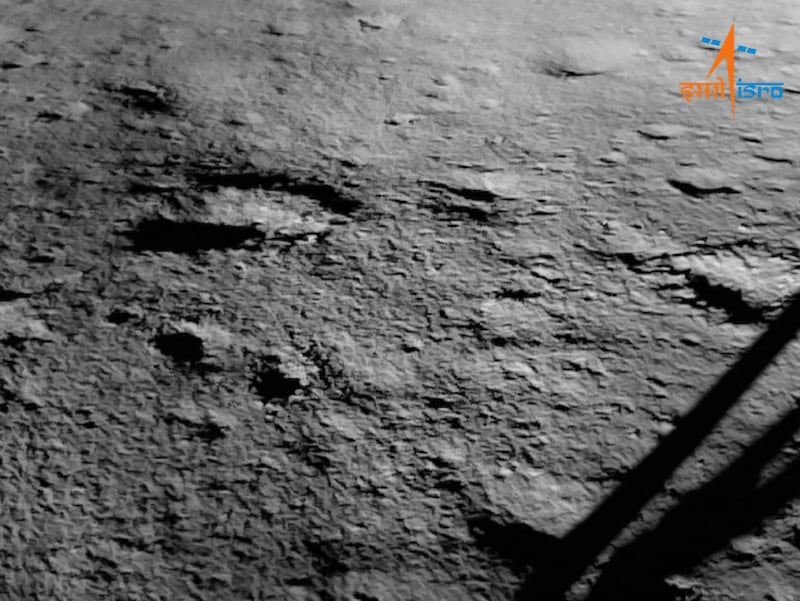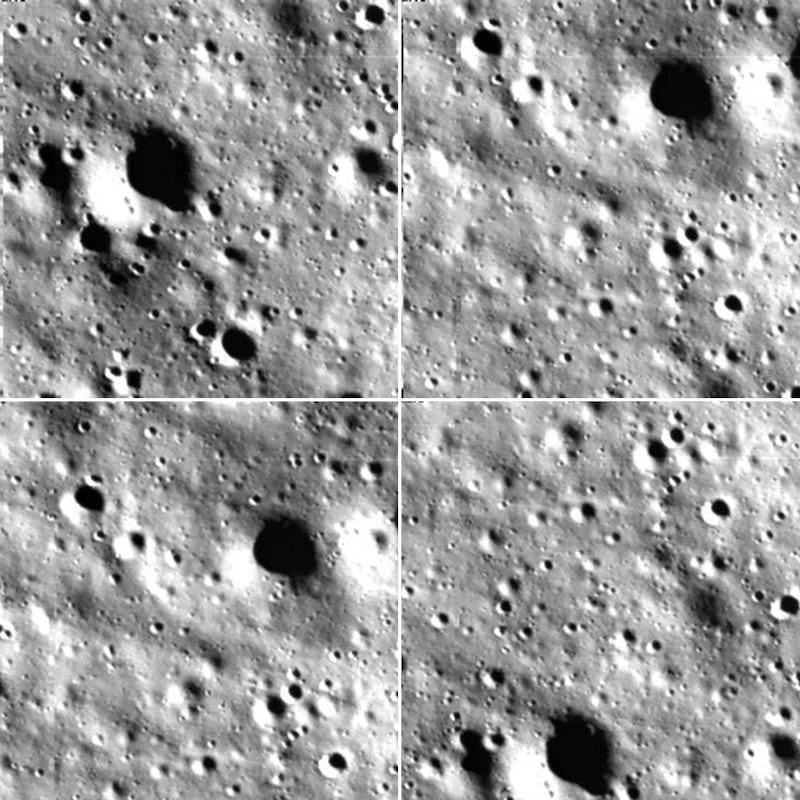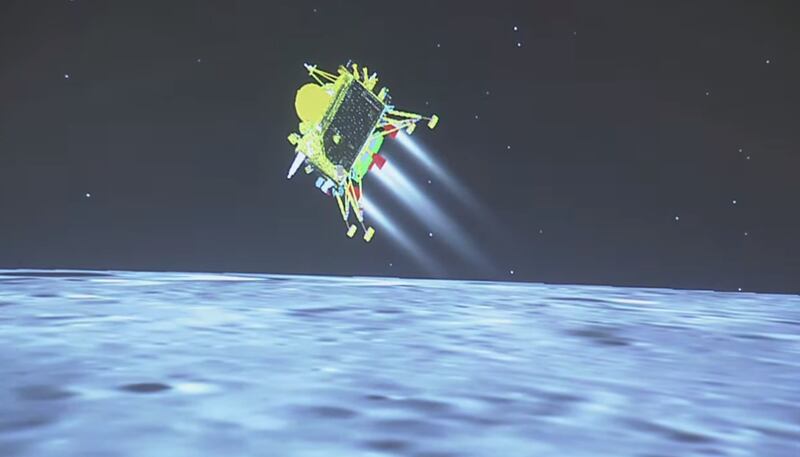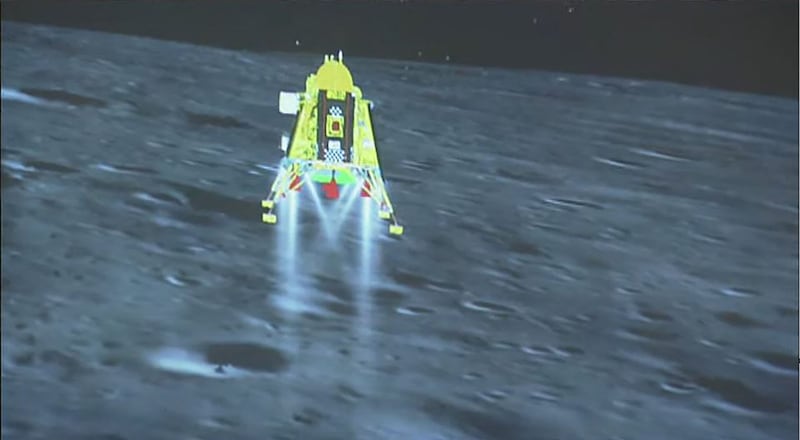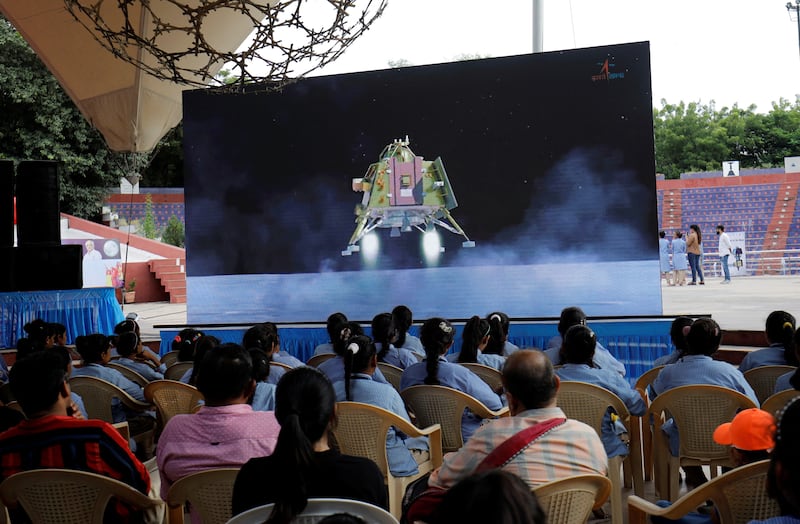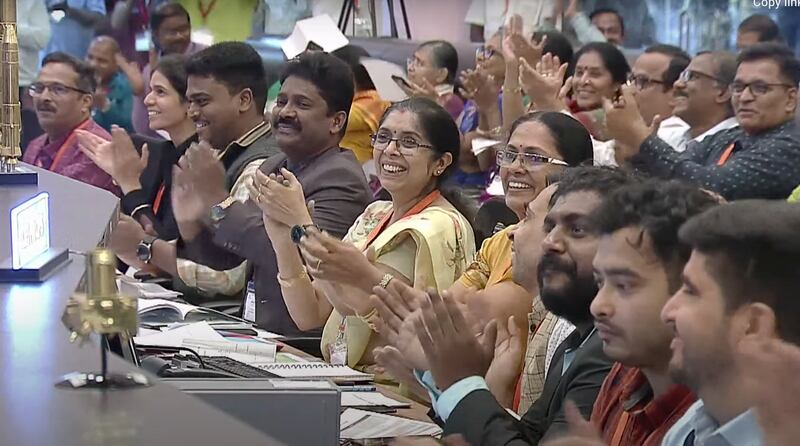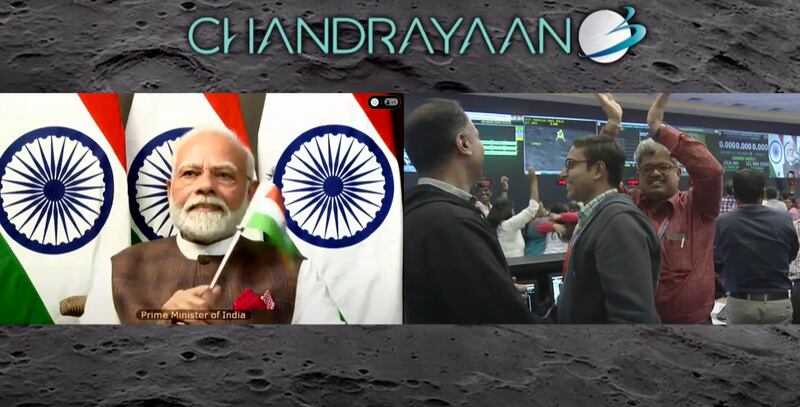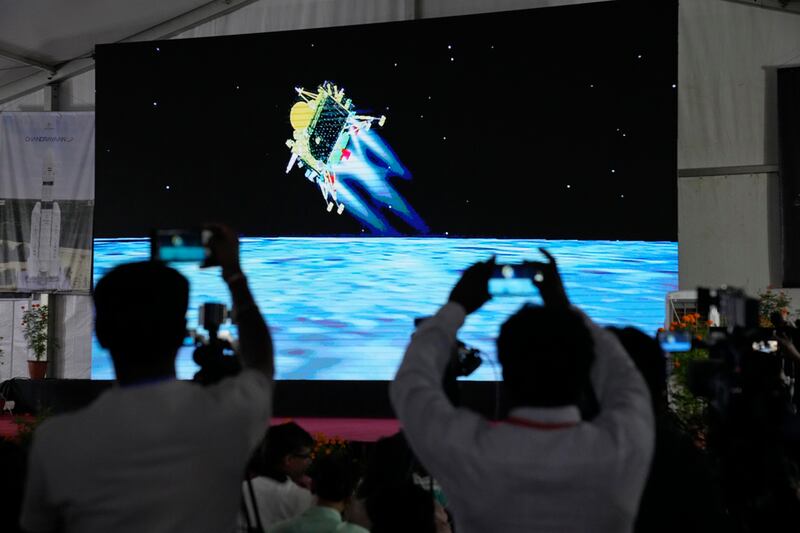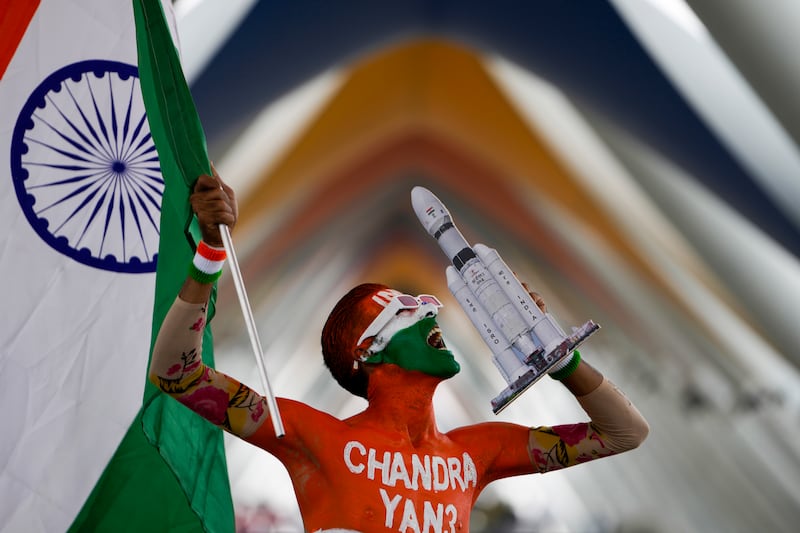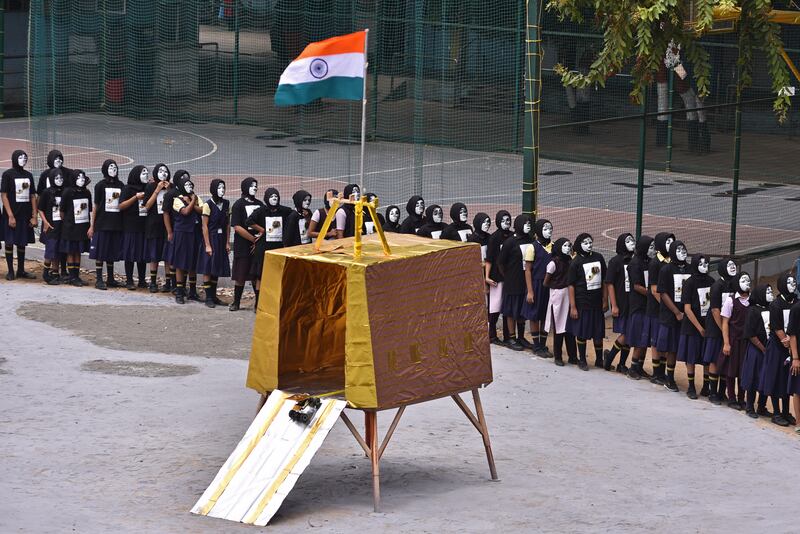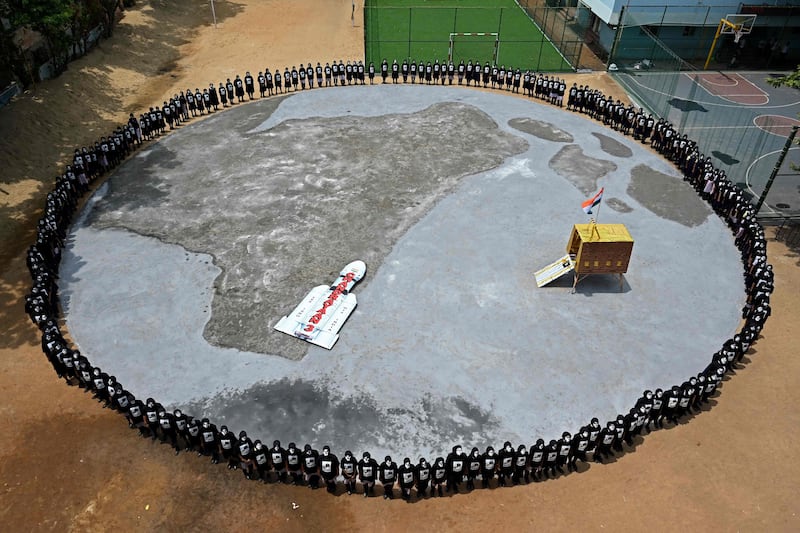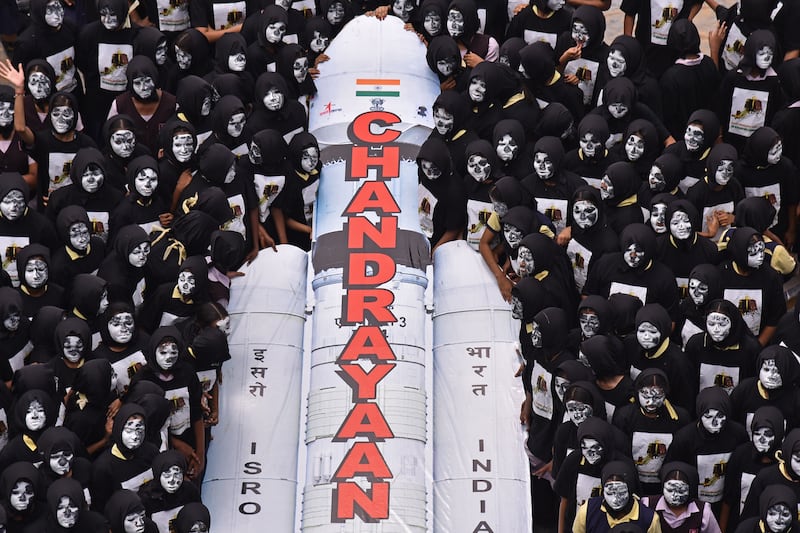India made history on Wednesday when it became the first nation to land a spacecraft at the Moon's south pole.
The touchdown of the Vikram lander, part of India's Chandrayaan-3 mission, in uncharted territory signified the country's entry into the space race.
Aside from this historic moment, India's mission plans to gain vital knowledge about lunar water ice, potentially one of the Moon's most valuable resources.
Missions to the Moon once conjured up grainy footage of Neil Armstrong and the famous line, “That's one small step for man, one giant leap for mankind”.
They peaked in the 1960s, with more than 60 missions during that decade – successful and unsuccessful. In the 1970s, there were slightly more than 20 lunar missions, none in the 1980s and only a handful in the two following decades.
But global interest has been rising in recent years and the number of missions is picking up, with as many as 25 planned for the next five years.
Landing on the south pole is an important development, however. Here The National takes a look at why.
Why are nations going back?
When the Vikram lander touched down on Wednesday (at 4.34pm UAE time) India became only the fourth nation to successfully carry out a soft landing on the Moon – after the US, China and Russia.
Days earlier, Russia's Luna-25 craft crashed during the country's first lunar mission in half a century.
Landing on the unexplored south pole was no easy feat because it is full of craters and deep trenches.
Nevertheless the US and China are working on missions to the south pole, which Nasa describes as being full of “mystery, science and intrigue”.
They are planning to build a lunar base and from there, eventually launch astronauts to Mars.
Russia envisages several more missions and will also explore the possibility of a joint Russian-China manned mission and a lunar base.
The UAE is planning a second attempt to land a rover on the Moon, after Japan's Hakuto-R Mission 1 spacecraft – carrying the UAE's Rashid rover – crashed as it tried to land in April.
Dubai announces new Moon mission – Rashid rover 2

Rashid 1 was the first mission under the UAE's home-grown Moon exploration programme.
The rover took a team of 11 engineers at the Mohammed bin Rashid Space Centre six years to build. No date has been set for a second attempt.
Why is the Moon's south pole so important?
The presence of frozen water on the Earth's main satellite could be key to developing a moon colony, lunar mining and potential missions to Mars, and the south pole has been where samples of water have principally been found.
Scientists speculated as far back as those early lunar missions in the 1960s that there was water on the Moon. But samples gathered by Apollo crews appeared to be dry.
Researchers from Brown University, in the US, in 2008 used new technology to study the Apollo samples and found hydrogen inside tiny beads of volcanic glass.
The following year, India's first moon mission Chandrayaan-1 did discover water on the moon through a Nasa instrument, although that mission was cut short because of technical glitches.
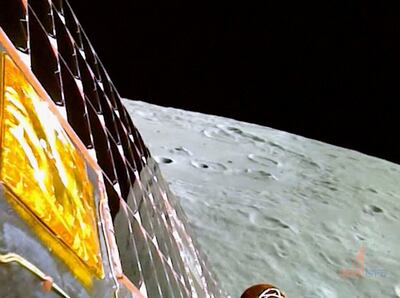
In 2020, Nasa researchers using the Stratospheric Observatory for Infrared Astronomy announced they had discovered water on the sunlit surface of the Moon’s Southern Hemisphere.
About 300ml of water was trapped in a cubic metre of soil spread across the surface.
This year, impact glass beads, which formed millions of years ago after asteroids crashed on the Moon, were collected by Chinese lunar lander Chang’e-5 around the north-south axis and were found to contain water.
“These findings indicate that the impact glasses on the surface of the Moon and other airless bodies in the solar system are capable of storing solar wind-derived water and releasing it into space,” Prof Hu, from China's Institute of Geology and Geophysics, said in March.
Why is water on the Moon a game-changer?
The presence of water on the Moon could provide a record of lunar volcanoes, material that comets and asteroids delivered to Earth, and the origin of oceans.
If found in sufficient quantities, it could be a source of drinking water and could help to cool equipment on future explorations.
The next phase could see it broken down to produce hydrogen for fuel and oxygen to breathe, supporting missions to Mars or lunar mining for rare Earth metals like scandium, yttrium and the 15 lanthanides, according to research by Boeing.
Nasa also estimates that there are a million tonnes of the rare helium-3 isotope on the Moon. This isotope could provide nuclear energy in a fusion reactor but since it is not radioactive, it would not produce dangerous waste, according to the European Space Agency.
Dr Dimitra Atri, an astrophysicist at New York University Abu Dhabi, told The National that the Moon's south pole was most likely to have ice that “has been deposited by meteorites over several billion years”.
“Because this region is not directly exposed to sunlight, the ice is preserved, unlike other regions which were explored during the Apollo era [near the equator], where it would quickly sublimate [from ice directly to water vapour],” he said.
“This pristine ice is of great scientific significance because it is a record of the more than four-billion-year history of the solar system.
“Since agencies around the globe are thinking about establishing permanent human bases on the Moon, ice can help with human habitation and can be used to produce rocket fuel for missions to Mars and elsewhere.”
With input from Reuters
